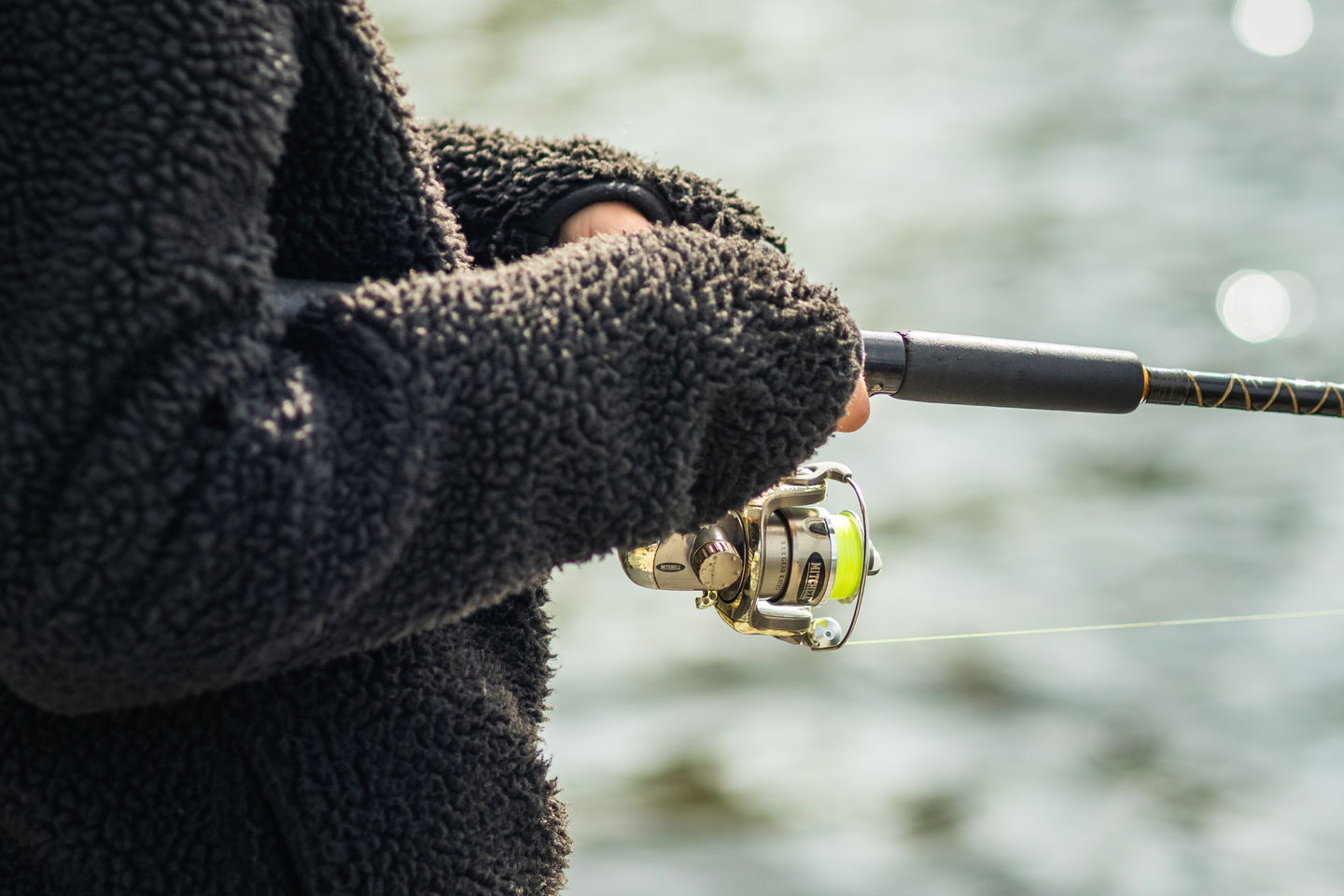Learn three basic fishing knots: Clinch, improved clinch, and double grinner
Images
In this article, we’ll look at three different fishing knots. These are some of the most-used fishing knots and for good reason. The clinch knot, improved clinch knot, and double grinner are three easy-to-learn knots and will serve a wide range of uses in your fishing, whether you use nylon or braided line.
Why should you learn fishing knots?
The knot on the line is the weakest link between you and the fish. The fishing line rarely breaks off elsewhere if the line is otherwise healthy. So, it’s good to know that the knot is secure and well tied. A fishing knot is designed to “pinch” around itself with as even a distribution of force as possible in order to increase the strength of the knot.
How to tie fishing knots
Clinch knot:
A good knot to tie in a loop, such as your fishing line, swivel, or snaps.
Start by threading the line through the loop you want to tie in and pull out the line tail to about 10 cm in length. Now wrap the line tail around the main line. Use 4 or 5 turns for nylon line, or 7 or 8 turns for braided line. (Braided line slips out of the knot easier than nylon.) When you’ve wound all your turns, the line tail will stick through the bottom loop, which we created when we wrapped the line around itself. Tighten the knot slightly with the line tail. Wet the knot with saliva and then use the main line to pull the knot tight. The knot should now slide down towards the loop you’re tying in. (Sometimes you may need to help pull the knot down while tensioning the main line.) TIP: Watch the video to see how it’s done.
Improved clinch knot
An improved clinch knot is almost exactly the same as the clinch knot but contains an extra final step before the knot is tightened. If you’ve done all the above steps for the clinch knot but not yet tightened it, you can do the final step. There is now a large loop because the line tail is sticking through the bottom loop of the line. Push the line tail through the new large loop, moisten, and tighten. TIP: Watch the video to see how it’s done.
Clinch knot according to step 1, and improved clinch knot according to step 2.
Double grinner
The purpose of the double grinner is to tie two lines together, such as when a fluorocarbon leader is to be tied to the fishing line without using a swivel that risks breaking the rod guide.
Start by placing the lines to your sides. One on your left, and the other on your right. Now hold the lines parallel to each other with your thumb and forefinger in the middle. The line tail should stick out from each side, about 15–20 cm from the fingers which you’re using to hold the lines. Take one of the line tails and bring it in towards the centre to form a loop. Push the line tail through the loop and wrap the line tail through the loop 4 or 5 times. (Wrap it around more times if the line is thin or slips easily, or wrap it around fewer times if the line is coarse and difficult to work with.) Tighten the knot slightly so that it “locks”. Now do the same with the line tail on the other side. When both knots are slightly tightened, pull on both main lines so that the knots slide in towards each other. Add some tension to the now spliced line so that you clearly feel the knots pinch firmly against each other without a risk of them sliding up. Then cut off the line tails. TIP: Watch the video to see how it’s done.
Double grinner
Contact
Address
Email address
HittaFiske
Organization logotype




